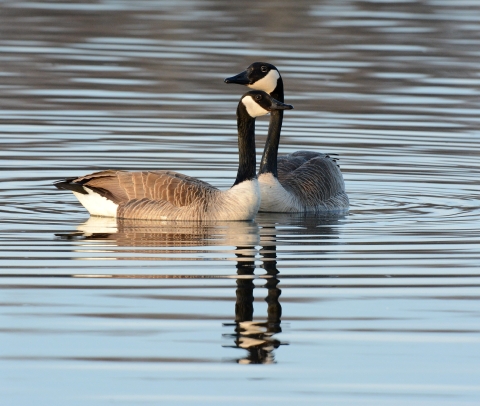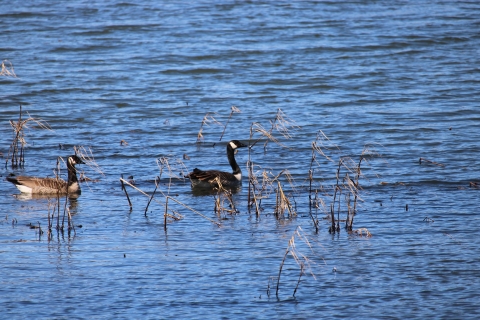Near Extinction
Although the population would deceive you, there was a time in the not-so-distant past where seeing a Canada goose was rare. In the early 1900s, a combination of habitat loss, such as wetland draining, and a lack of hunting regulations had resulted in near-complete extinction of the bird from Minnesota. One of the subspecies, the giant Canada goose, was even believed to be completely extinct.
Migratory Bird Treaty Act of 1918
The Migratory Bird Treaty Act of 1918 was one of the first remedies for the overhunting of all migratory birds, including the Canada goose. This Act made it unlawful to hunt, kill, purchase or sell any migratory bird, their nests, or even their eggs, unless otherwise authorized under a special permit. This Act gave geese a brief head start, and this, in combination with an increase of fields and lawns due to a boom in the human population, worked well for the Canada goose population.
Rochester: Goose Love Affair
When the Mayo Clinic opened in Rochester, MN in the 1920s, the Mayo family brought more than just their medical practice. They also brought 15 Canada geese to keep on their own land. Dr. Charles Mayo dabbled in conservationism and, with the decline in the Canada goose population, he enjoyed having the ability to feed this elusive species while on walking the grounds of his own home.
This 15-bird flock did not stay small for long. They attracted migrating geese, and it quickly grew to around 600, including the rediscovered giant subspecies, which was confirmed in 1962. These geese moved into Silver Lake, MN and became a staple for both residents of Rochester and patients at Mayo Clinic. Eventually a powerplant started using Silver Lake as a location to transfer heat from their machinery. While not generally great for wildlife, this actually prevented the lake from freezing over and meant the goose population had and continue to have open water throughout the winter. This in turn makes it so that the geese do not need to migrate to find food, and this is reflected in a large year-round population of geese found in Rochester.
Other Methods
Aside from Rochester’s love for the goose, more efforts were utilized throughout Minnesota to bring back the geese. In the 1950s, Canada geese were bred and reintroduced to the wild in Minnesota. Conservationists hoped they would establish a resident population and not merely rely upon the migrating population using the areas as a stopover on their way south. In the 1970s, Professor Jim Cooper from the University of Minnesota got involved, hoping to establish populations of Canada geese within the Minneapolis and St. Paul metropolitan area. These plans were too successful however, and in the late 70s and early 80s the Canada goose population grew rapidly due to being well equipped to thrive in the low-cut grass of our parks and lawns. Professor Jim Cooper and his students had to pivot toward helping round up geese in Minneapolis, in order to send them to other parts of Minnesota that were still working on their own goose populations. As geese became established in more areas, it became difficult to find anywhere that would take the extra individuals, and USFWS began issuing permits to capture and send geese to be processed for food shelves. These roundups have lessened now that the goose population has stabilized at a more manageable number.
From Reintroduction to Population Control
With a stable population, Canada geese are no longer under threat of extinction and are a part of the waterfowl hunting season every year. To manage their population, there is a hunting season for geese from early September through December depending on the permit you possess. Always check hunting regulations to determine what the bag limit is and what species are in or out of season. For more information on hunting at Minnesota Valley National Wildlife Refuge and Wetland Management District please see the regulations page for hunting activities, linked here. To view these comeback birds, feel free to come visit any of the wetlands on refuge, such as at our Bass Ponds, Old Cedar Avenue and Wilkie trailheads, to attempt a glimpse of the elusive Canada goose.






